

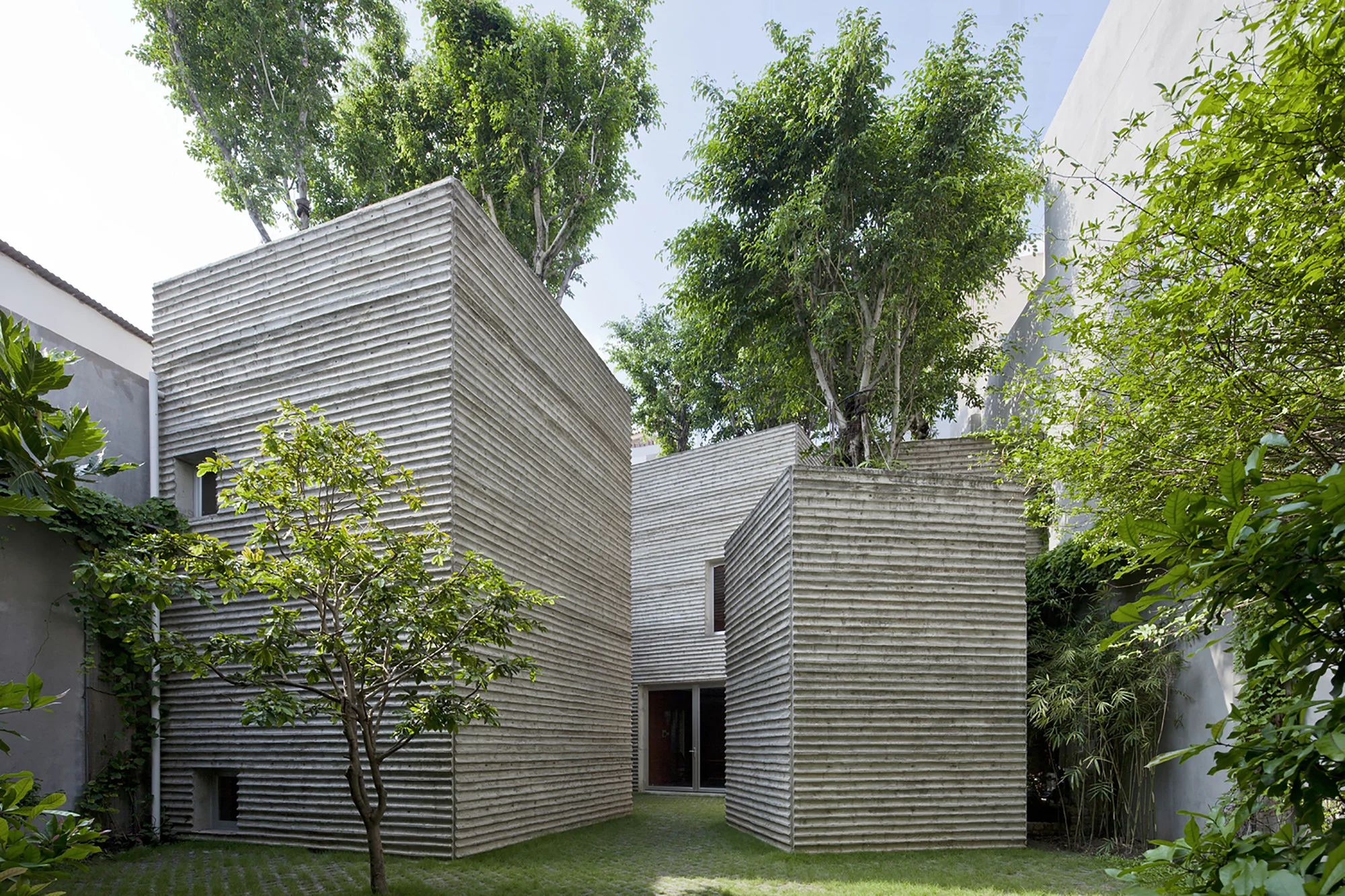

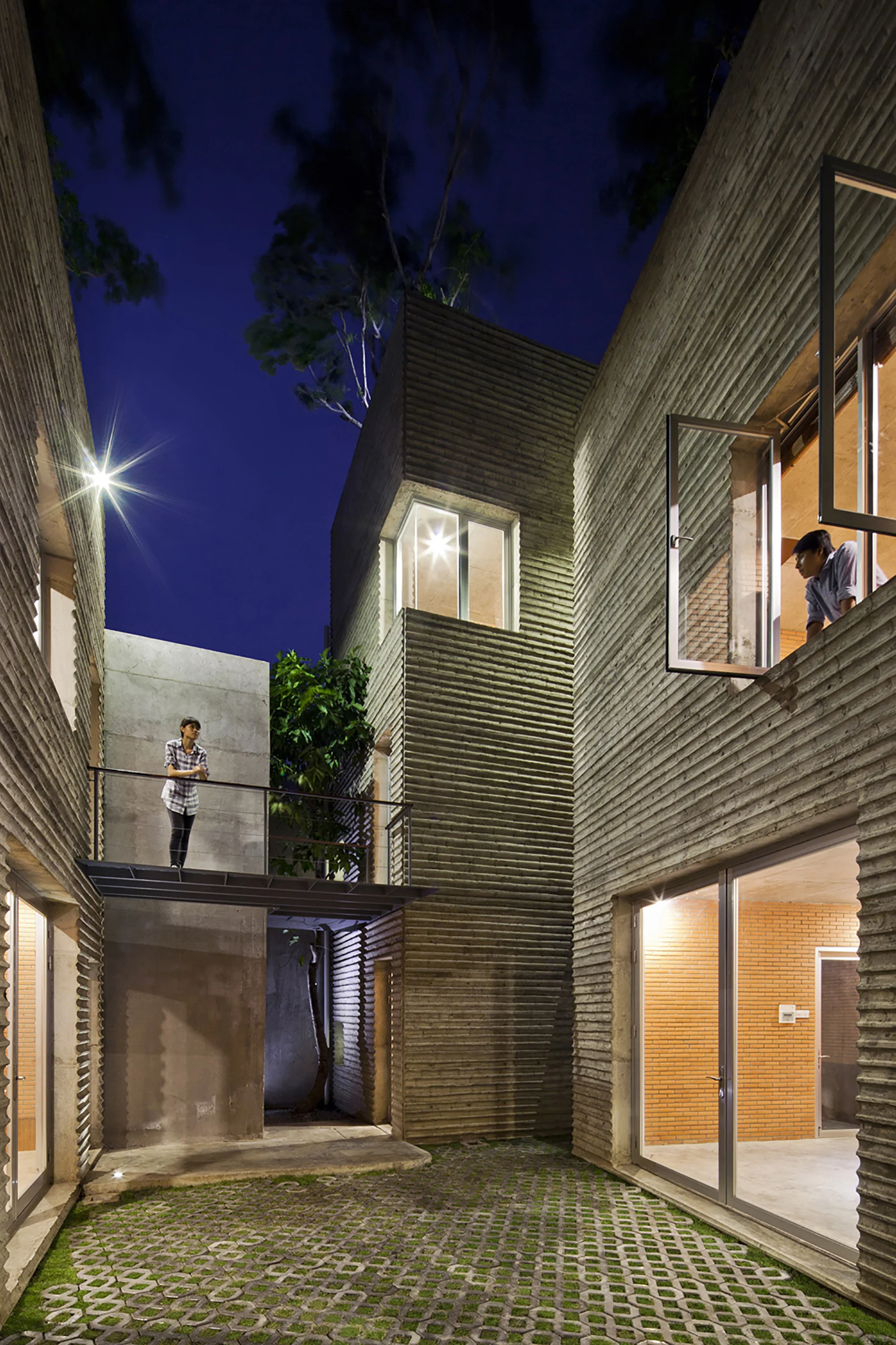



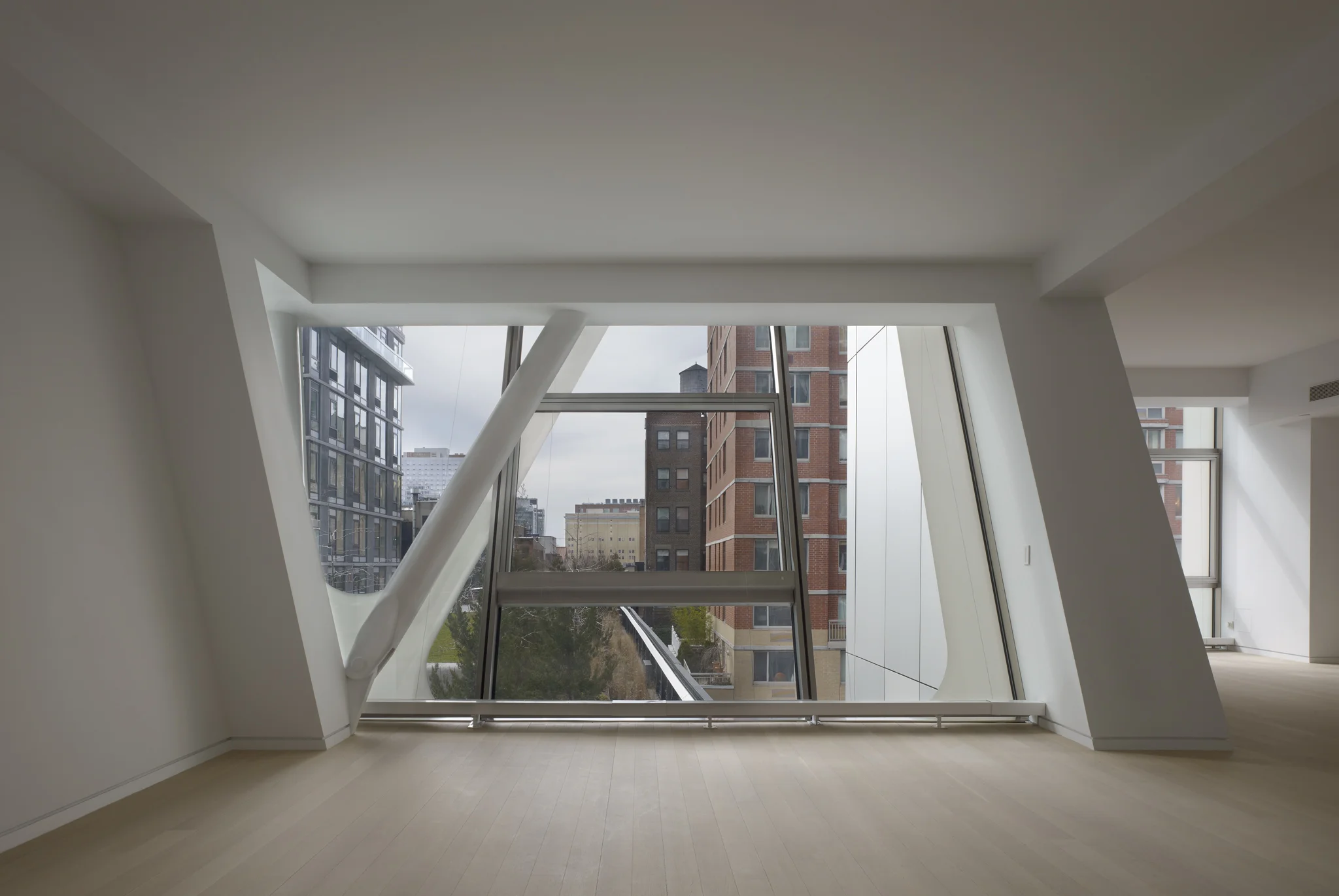
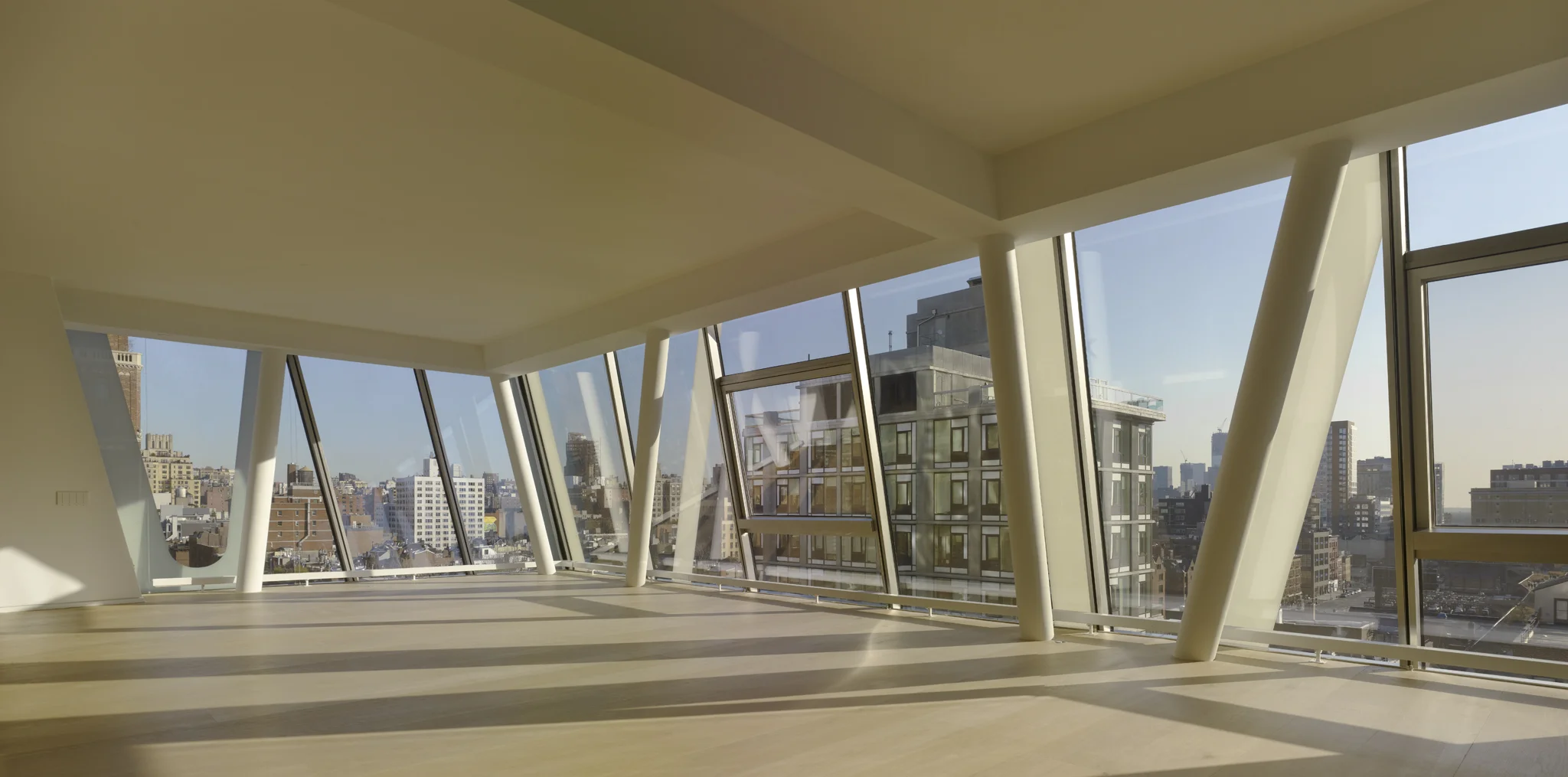




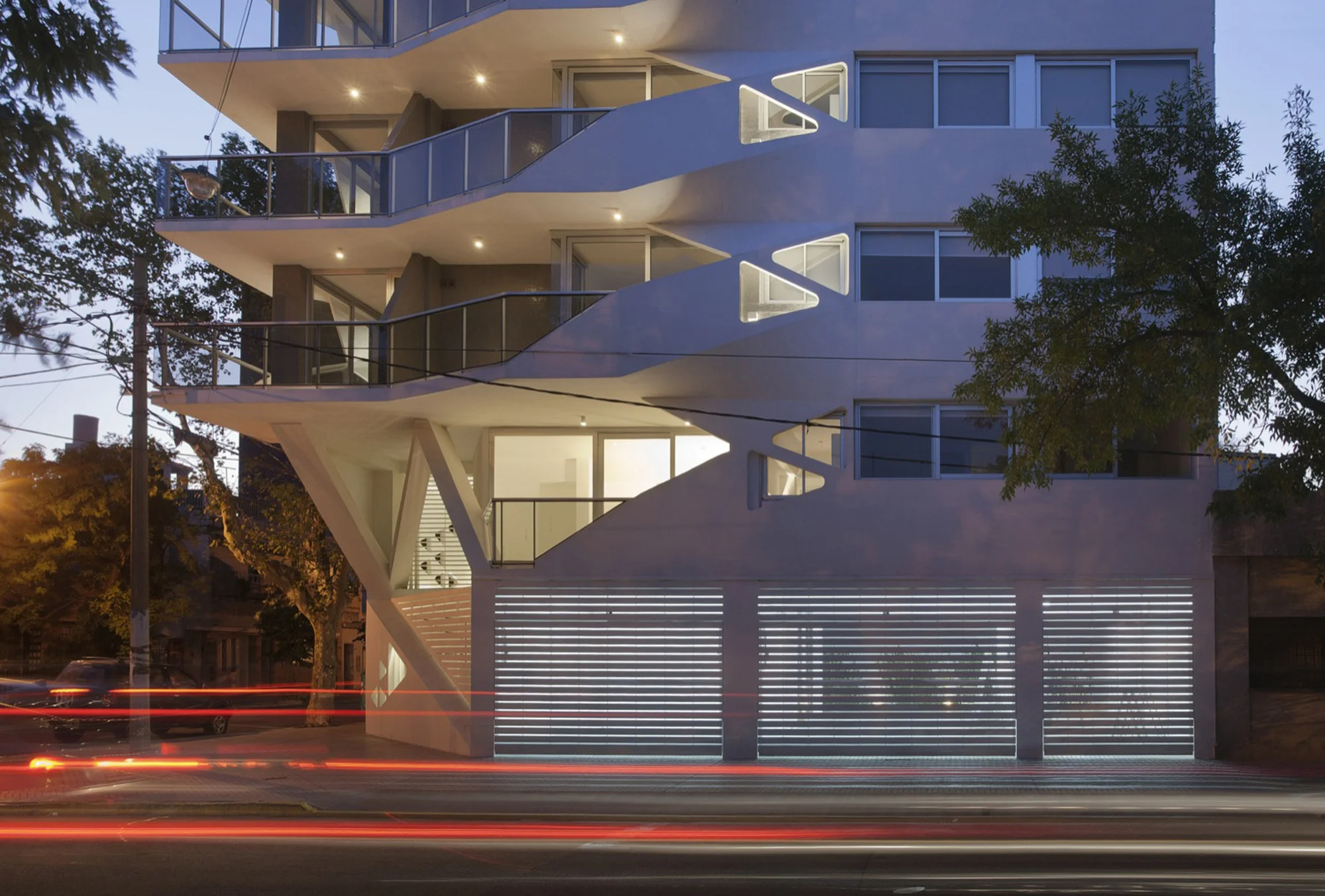
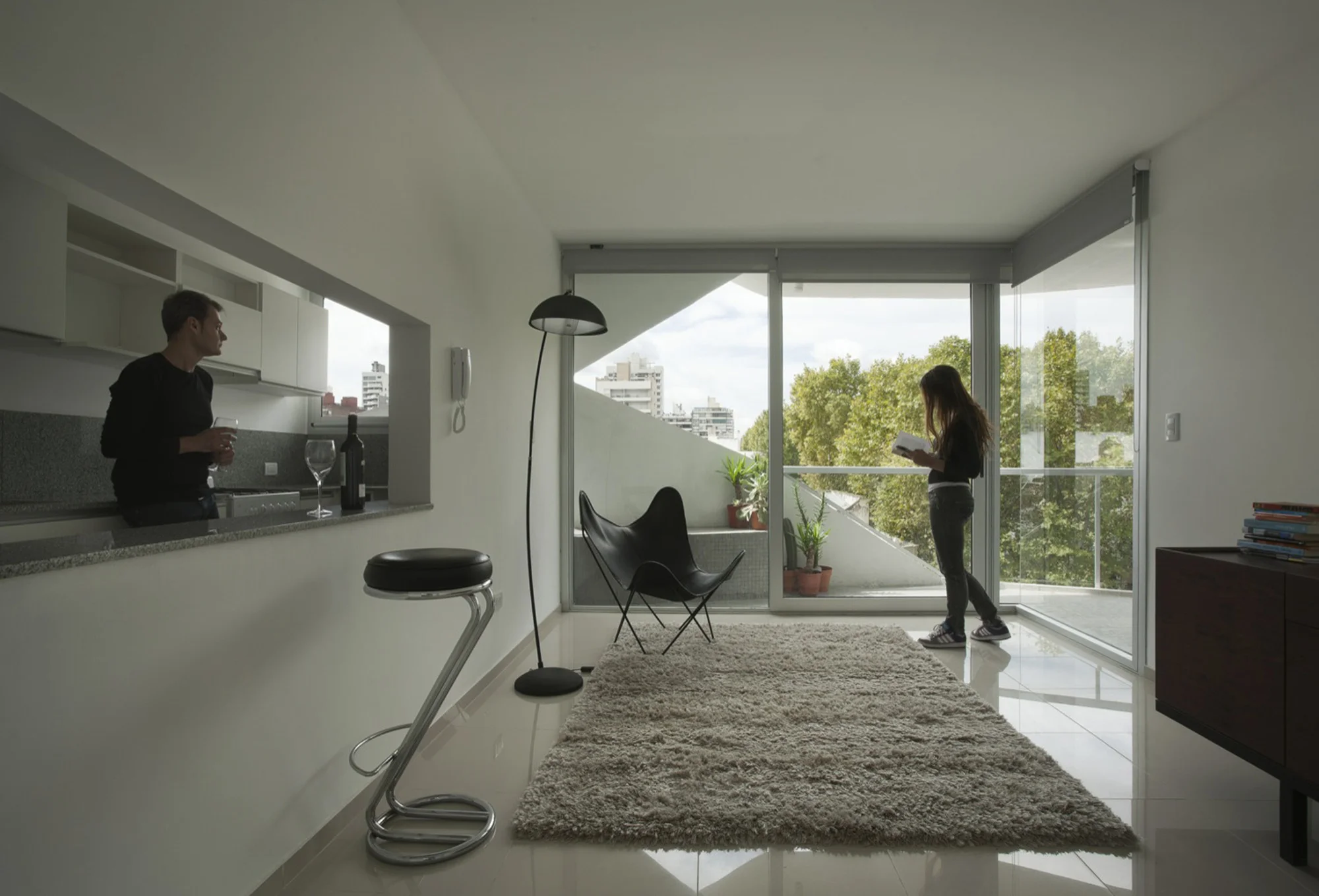

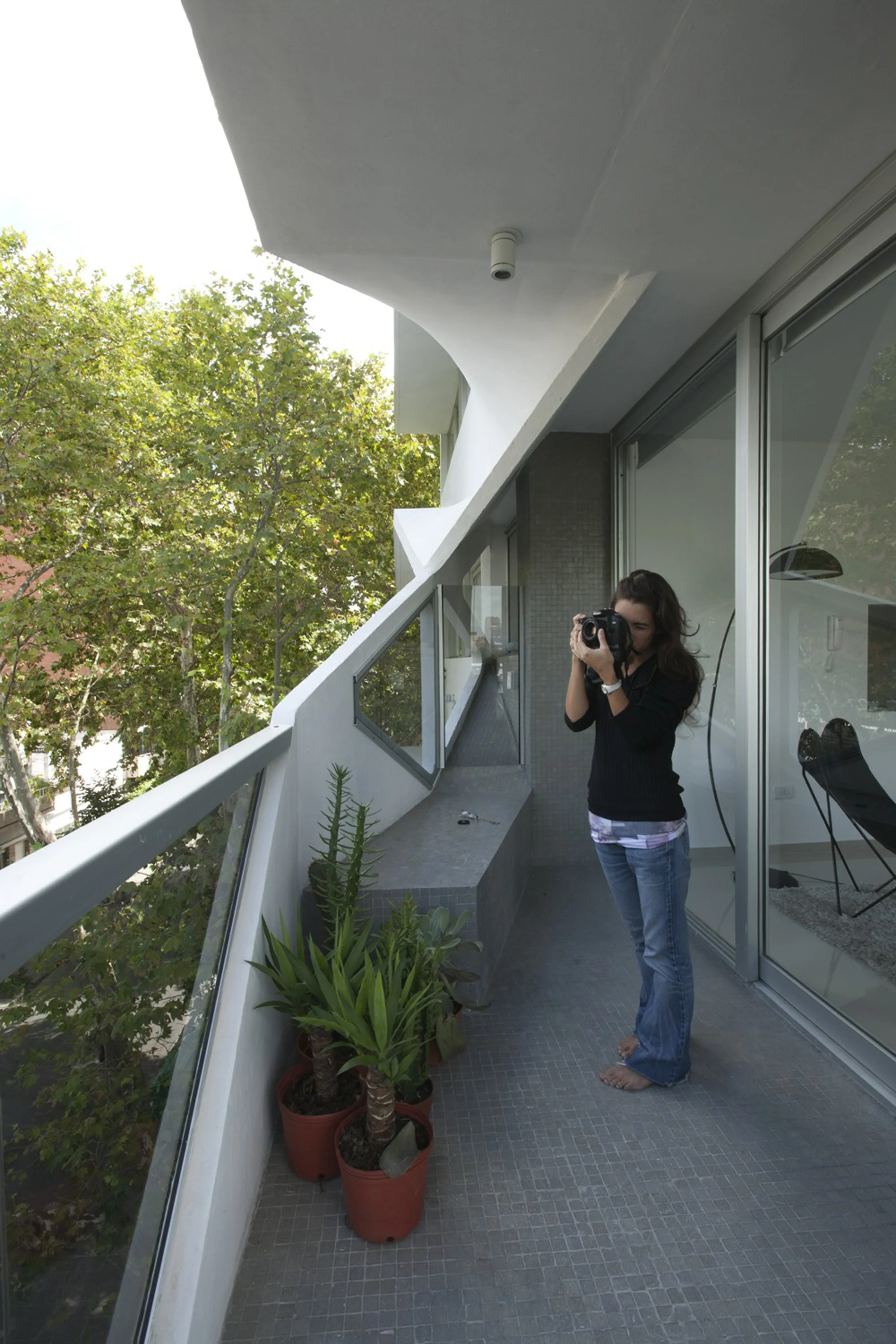
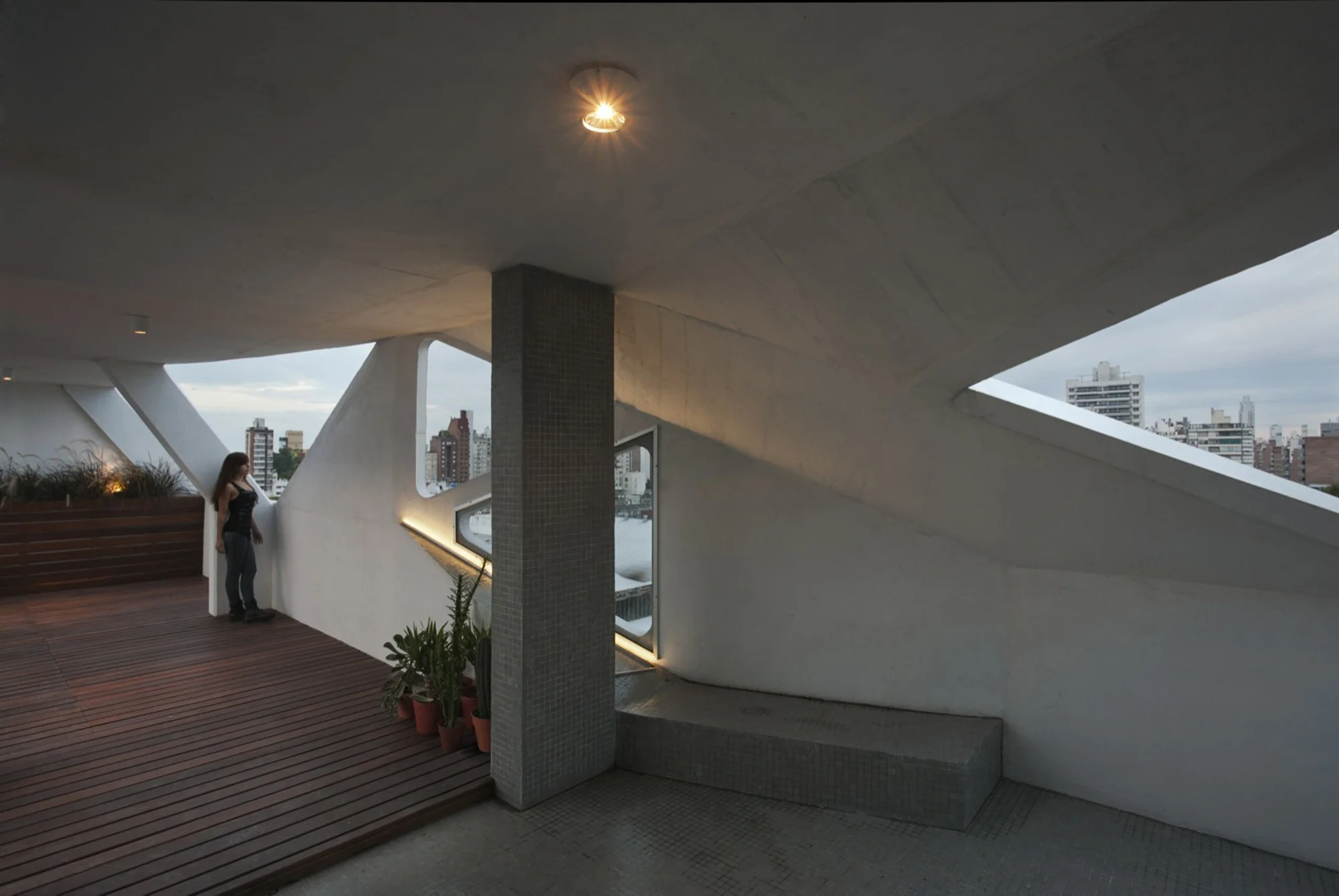


















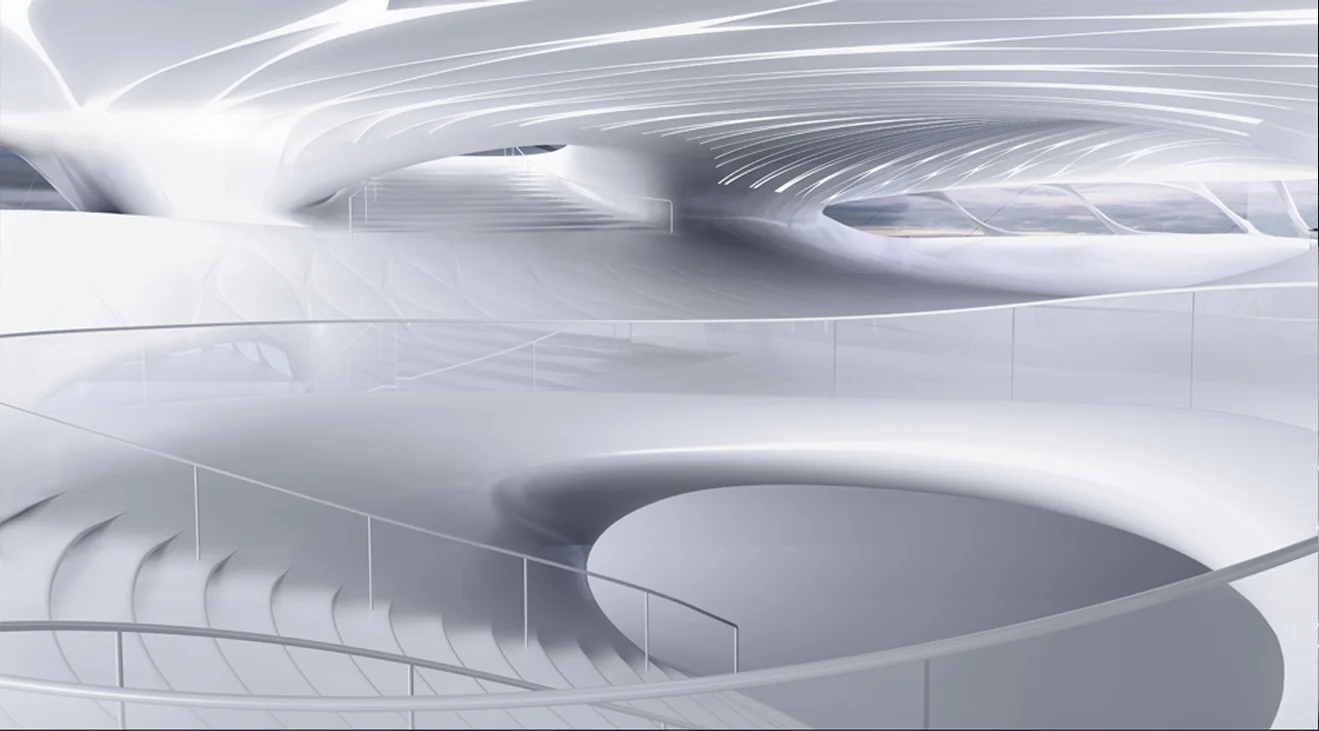
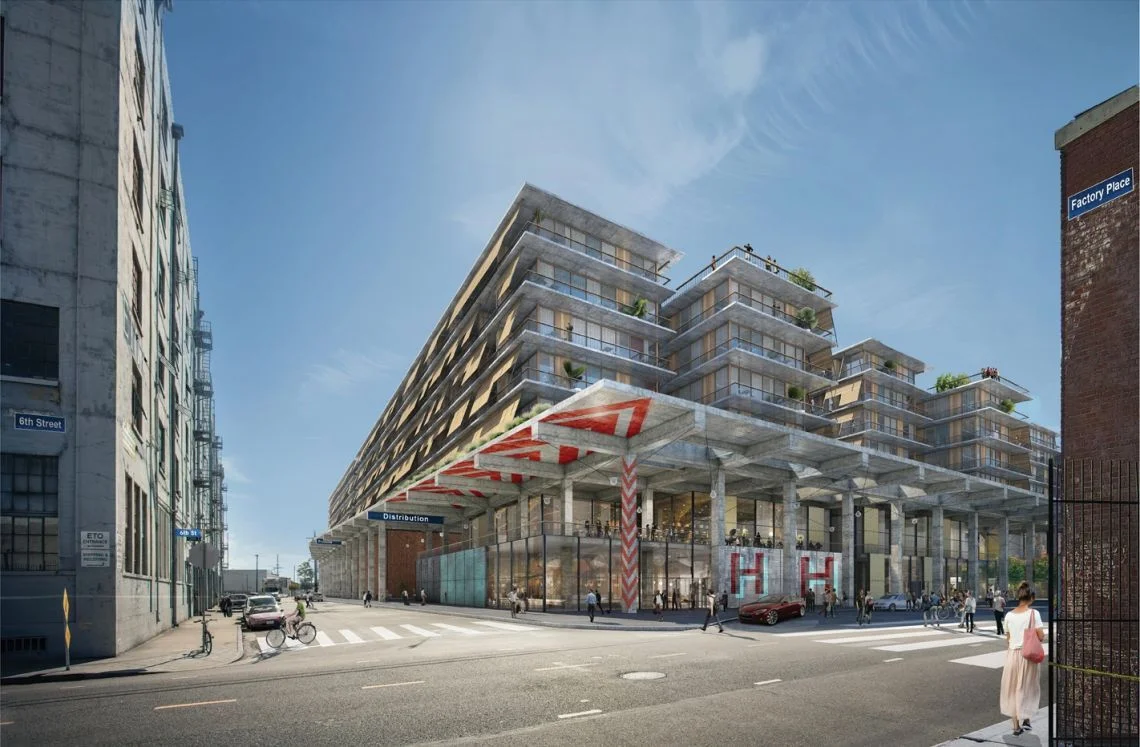

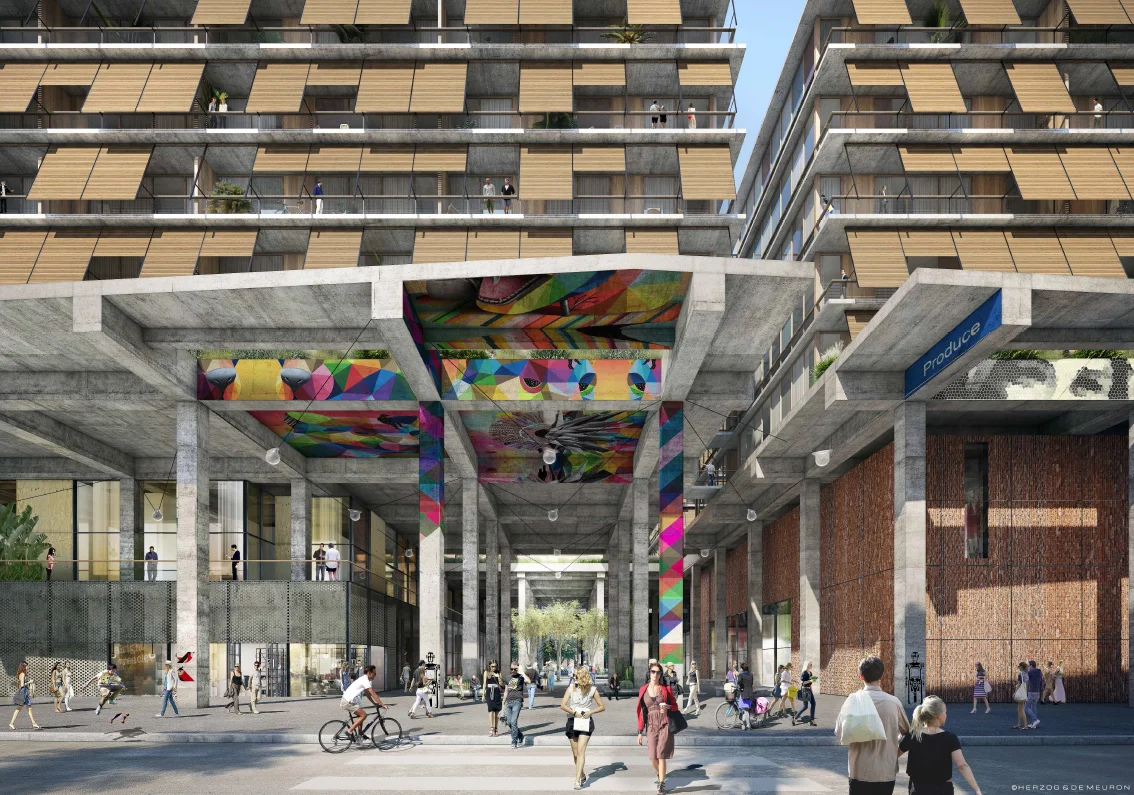

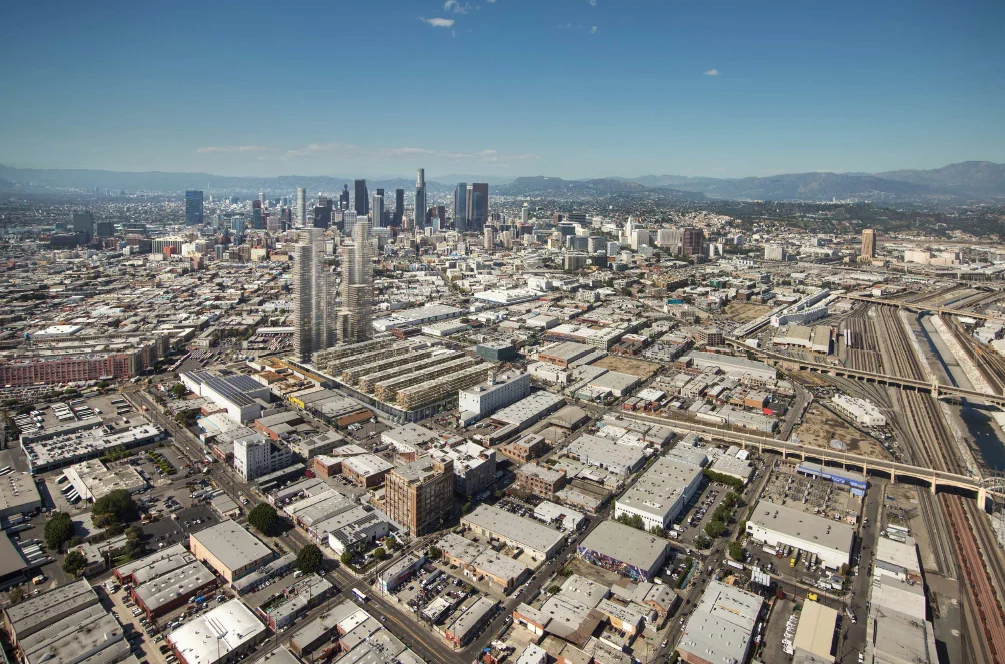


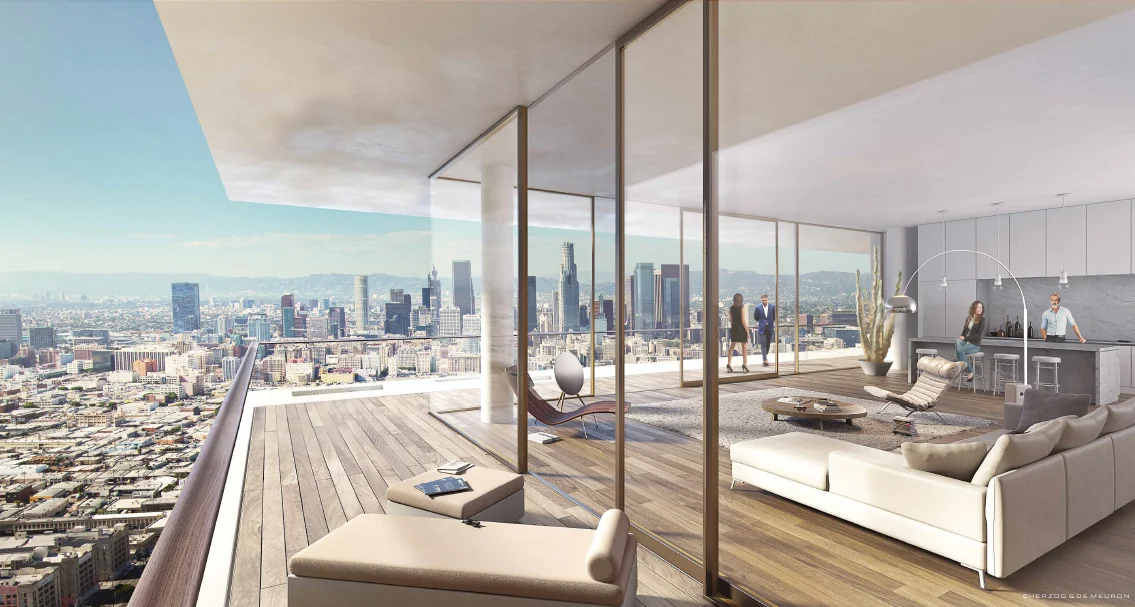



Jay-
- The first design is my favorite. It's peaceful (not every artist needs peace, but to have foundation is important). The design encourages community among the artists. Collaboration and inspiration are pillars to creating. Living in a space where even navigation of the grounds requires you to have to pass by your neighborhood because of how the complex is angled will, in theory increase the likelihood collaboration and inspiration will then become a lifestyle.
Omar-
-It seems like the warehouse would ideally be a two story building, that way the experience and interaction between the artist is more intimate. The public programs such as art galleries, working areas and leisure zones could be plugged into the ground level so that they are linked by the circulation in plan. The private areas such as living quarters can remain upstairs and have direct access to the green roofs.
Jay-
- Another great element from the first design is that they seemed to have created an oasis, or world of its own within the walls of the facility. This is a major factor. Theoretically, we would like artists to pull from the depths of their mind, intrinsic tastes, and own moral compass while minimizing distraction. Having a second level with a view of the city along with a garden ( as pictured in the first design) allows the residents to still be informed by the outside world, but from a (literally) grounded perspective.
Omar-
I am impressed by your wording in this segment. The fact that you digested the experience of this building as an 'oasis' tells me you have a strong sense of spatial visualization.
Jay-
- I am a fan of Modernism which is displayed in the other living spaces.

This is what I'm talking about when I say brick looks great with concrete and greenery. Aesthetically, exposed steel structure combined with brick and concrete is beyond dope. Conceptually, it makes sense to keep the living quarters simple and modern like you mentioned, and get more expressive in the public areas (Hence Eric Owen Moss) where the unconventional details, structure, and space can influence the artist.